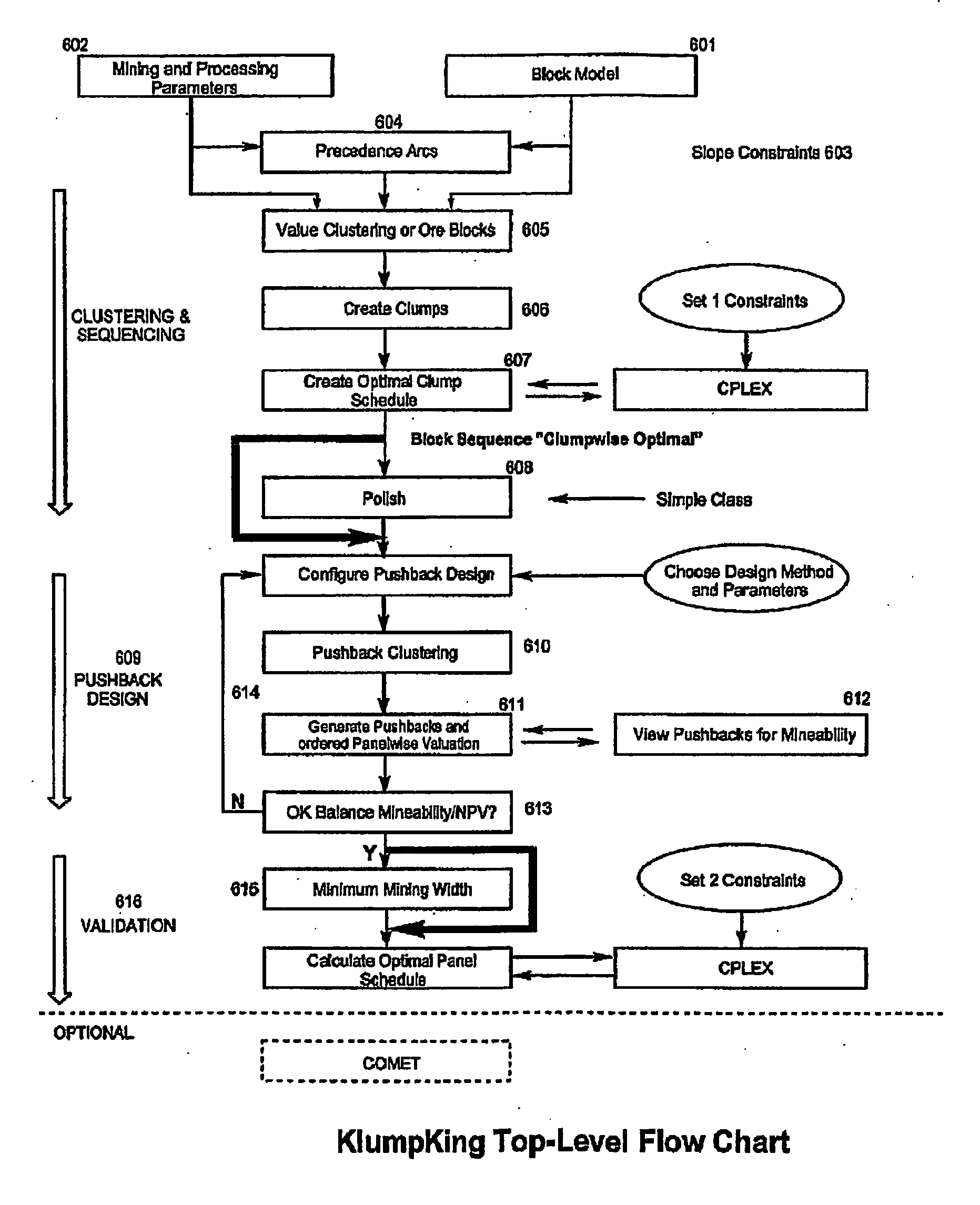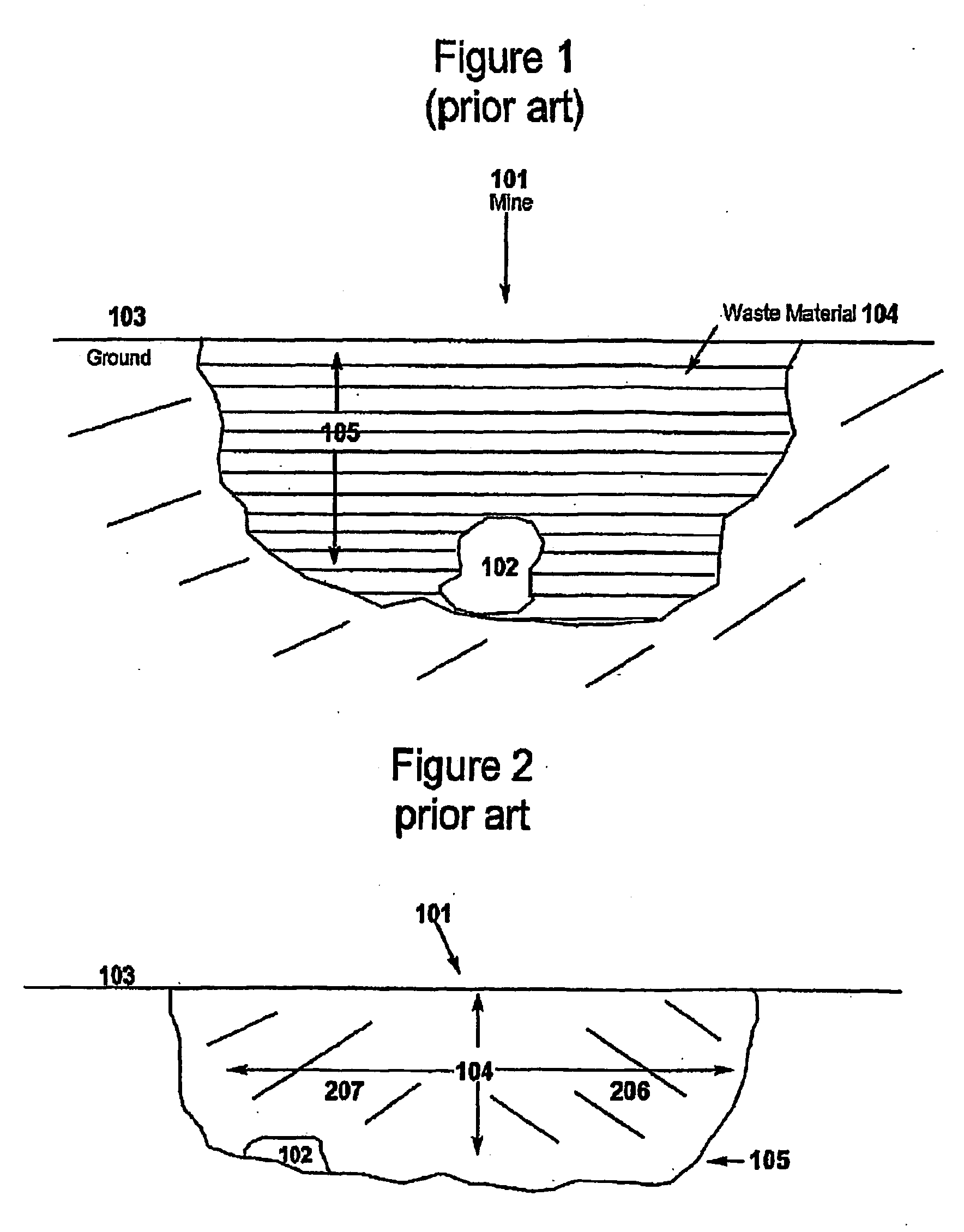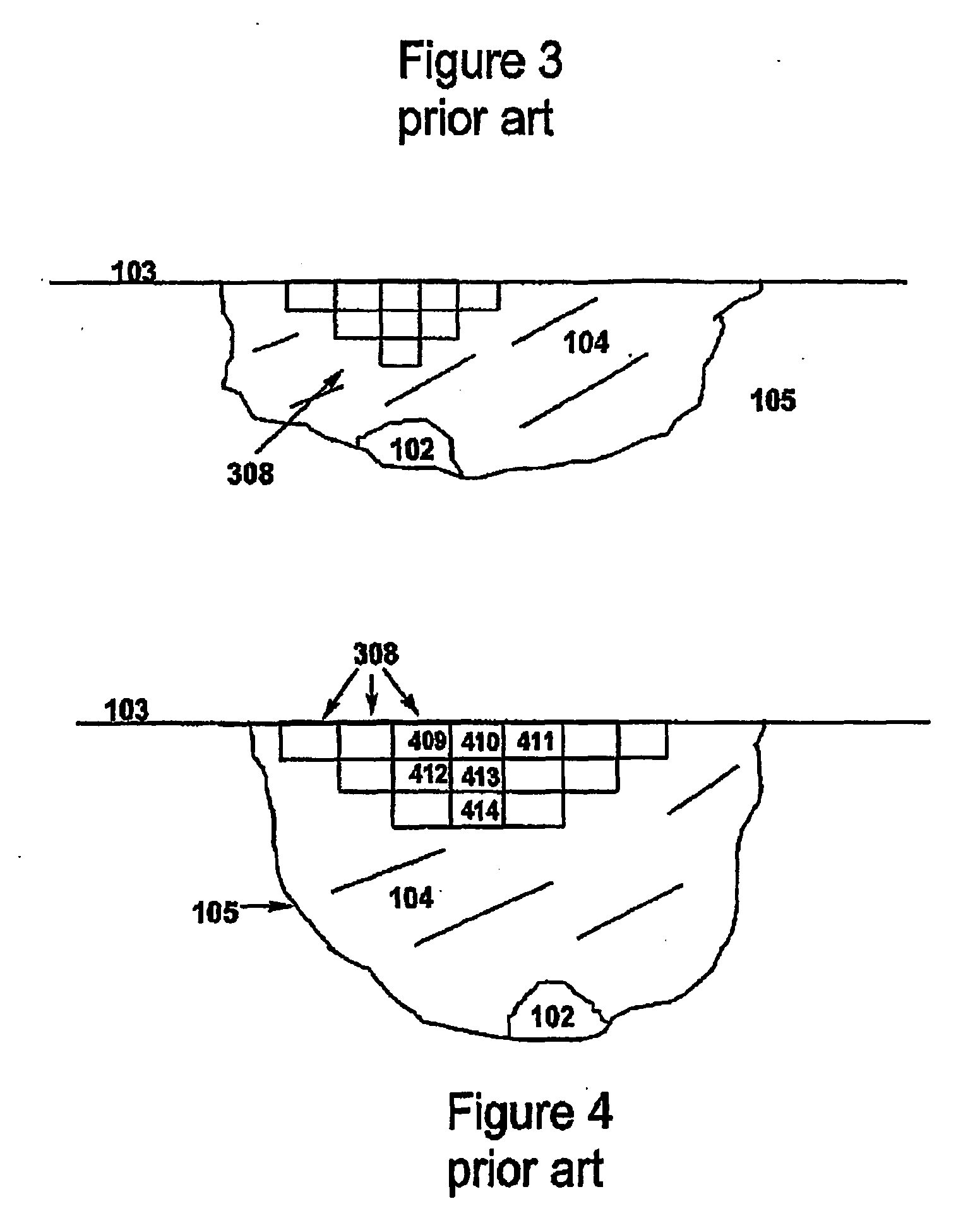System and method(s) of mine planning, design and processing
- Summary
- Abstract
- Description
- Claims
- Application Information
AI Technical Summary
Benefits of technology
Problems solved by technology
Method used
Image
Examples
Embodiment Construction
[0099] In order to more fully describe the present invention, a number of related aspects will also be described. In this way, the reader can gain a better understanding of the context and scope of the present invention.
1. Generic KlumpKing
[0100]FIG. 6 illustrates, schematically an overall representation of one aspect of invention.
[0101] Although specific aspects of various elements of the overall flow chart are discussed below in more detail, it may be helpful to provide an outline of the flow chart illustrated in FIG. 6.
[0102] Block model 601, mining and processing parameters 602 and slope constraints 603 are provided as input parameters. When combined, precedence arcs 604 are provided. For a given block, arcs will point to other blocks that must be removed before the given block can be removed.
[0103] As typically, the number of blocks can be very large, at 605, blocks are aggregated into larger collections, and clustered. Cones are propagated from respective clusters and cl...
PUM
 Login to View More
Login to View More Abstract
Description
Claims
Application Information
 Login to View More
Login to View More - R&D
- Intellectual Property
- Life Sciences
- Materials
- Tech Scout
- Unparalleled Data Quality
- Higher Quality Content
- 60% Fewer Hallucinations
Browse by: Latest US Patents, China's latest patents, Technical Efficacy Thesaurus, Application Domain, Technology Topic, Popular Technical Reports.
© 2025 PatSnap. All rights reserved.Legal|Privacy policy|Modern Slavery Act Transparency Statement|Sitemap|About US| Contact US: help@patsnap.com



